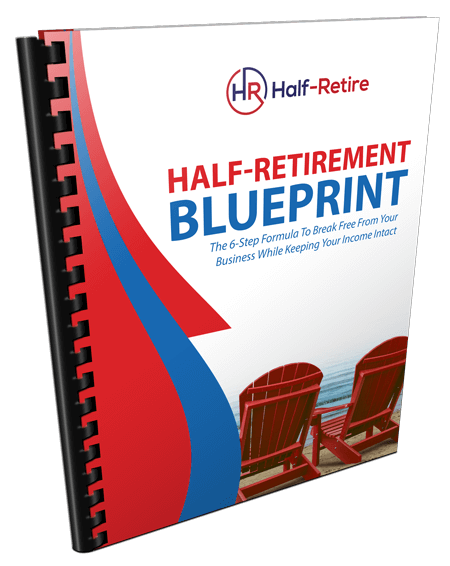There’s an old saying, “Business owners don’t sell for money; they sell because they are frustrated.” The price tag to end that frustration can be millions of dollars. In a low-interest rate economy, a big pile of cash is worth far less than an income stream. So when a business owner sells, they exchange a stream of income with frustration for a much smaller sum which is hassle-free.
After seeing too many business owners accept this bad trade, I wondered if there wasn’t a way to make their existing income streams less frustrating. Before we get into how that works, let’s show you how much money you need to sell your business for to replicate your current income.
What is the 44% Rule?
Most small businesses sell for a multiple of annual earnings, specifically two to five times annual earnings. A recent study by Digital Exits found the average multiple across all industries was only 2.59 times earnings.
Once you sell your business, there will be costs associated with the sale (brokers, lawyers, advisors, etc.) plus a tax bill. That will amount to approximately 25 percent, which you subtract from your take.
For example, let’s use a business that makes $300,000 annually. The exit math looks like this:
$300,000 annual business income @ 3X multiple = $900,000 sales price
$900,000 sales price less 25% expenses & taxes = $675,000 investible cash.
If you were receiving $300,000 annually from the business, you would need a 44.4% investment return on your sales proceeds to replace the income you received from the business. (Run your own math in a spreadsheet)
Should you sell your business?
If you can sell your business for an amount that allows you to never worry about money, then you should sell whenever you desire. However, most businesses cannot sell for a sum that would furnish a stress-free retirement. If that includes you, don’t take too little in return for decades of hard work just to stop the grind.
A new trend: Half-Retirement
Exit planners predicted a tidal wave of businesses would be for sale when baby boomers turned 65. Books such as The Ten Trillion Dollar Opportunity predicted there might eventually be too many businesses for sale and cause an imbalance in the market.
The tidal wave never happened
To everyone’s surprise, many boomers did not exit their businesses at 65. They didn’t pass the business on to their kids; they didn’t do an ESOP; they didn’t take any type of exit. Instead, they found a way to radically reduce the stress of owning a business and retain their income stream.
This is the Half-Retire Revolution. By keeping their income stream, business owners bet on themselves instead of insurance companies or the stock market. They are refusing to give up the outstanding returns they make on the investment in their own business for minimal bond returns.
These owners are also saying “No” to their business frustrations. By eliminating the non-monetary reasons businesses are sold, the owner can enjoy work, retirement, as well as excellent income.
I have seen many business owners successfully Half-Retire. Unfortunately, you can’t just flip a switch; it’s a process. Here are the steps we have seen business owners take to Half-Retire:
- Find a compelling reason to #halfretire. This is the “magnet” that will pull you towards the right activities.
- Adjust your mindset. There are probably legacy mindsets that are holding you back. Remapping these mindsets can be magical, and flip the switch so you can cut your workload.
- Reduce the business’ dependence upon the work you do. It’s alright for the business to depend upon your expertise, skill, judgment, and connections, but it’s not alright for the business to need you eight hours or more of each and every workday.
- Re-leverage assets to allow for growth. Every business has under-leveraged assets. By re-leveraging them, you can recover the value lost by your time away from the business.
- Set it on autopilot. Create a quick and easy management structure to provide the insights you need to direct the business in a small amount of time.
- Enjoy the spoils. Half-Retirement offers the best of everything: excellent income, security, and work-life balance. You have worked hard to build this business, now enjoy the rewards!
The Half-Retire Blueprint is below. Where are you in the process?
Download the Half-Retire Blueprint


